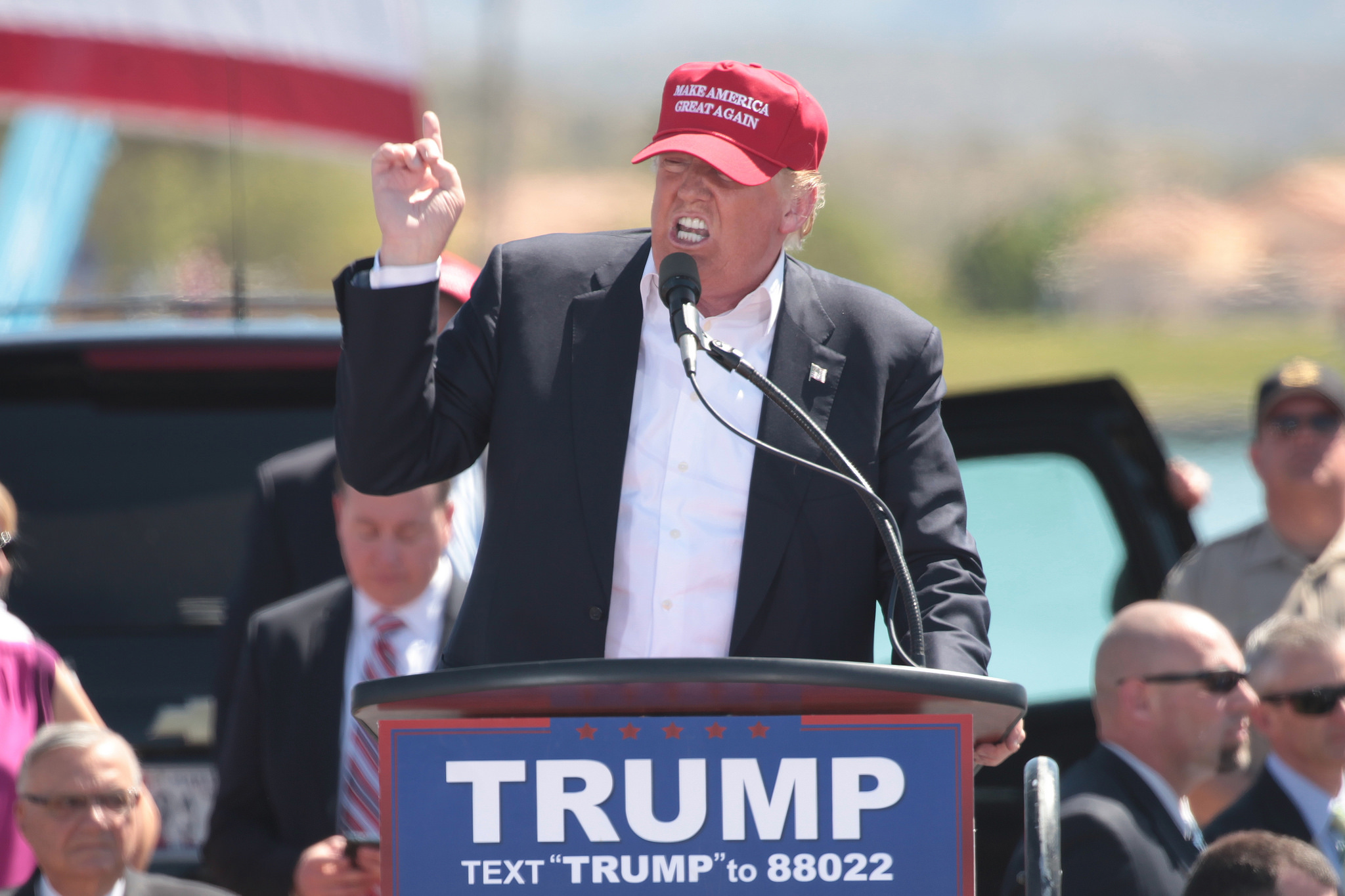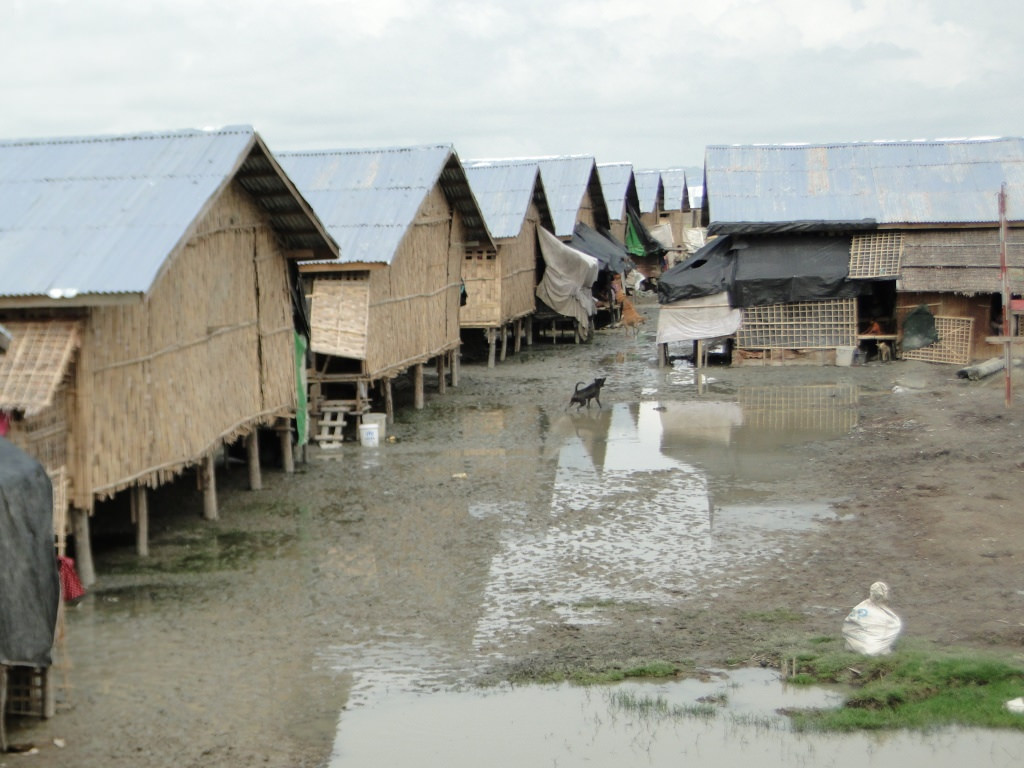
In the “domestic democratic peace,” it is generally maintained that democracies would be less inclined to engage in state repressive action (i.e. restrict freedom of speech, movement, association, as well as limit use of torture, arrest, and killing). This is one of the more robust findings in the literature (see here and here).
Now, Donald Trump appears to (forgive my use of the phrase) trump or significantly problematize some of this work. When a potential political leader of a democracy espouses ideas/thoughts/statements/principles that appear to be associated with political policies that would restrict civil liberties and violate human rights if they were to be elected, how should this be understood within the context of prior work? Well, interestingly, existing research is not much help on this point. The most common set-up within existing literature involves the idea of democratic leaders reducing their ongoing use of repressive behavior because of what they think citizens will do against them. I say “reducing” here because most scholars do not consider the onset of repressive campaigns. Rather, they are studying “degrees of repressiveness” with databases like the Political Terror Scale or they are studying the “number of repressive events” like in Cingranelli and Richards (CIRI) or Social Conflict in Africa Database.
Trump problematizes existing work because he makes folks really wonder: what does it mean if a significant part of the population supports a candidate who, for all intents and purposes, says that they are going to engage in repression if they get in office? Ummmmmmmmm – most research has nothing on this point. Some work does get us there though.
Most of the research on state repression/human rights violations adopts a position where democratic citizens and leaders alike do not favorably view repressive activities. It is expected that once you get to a democracy, leaders are kind of like: “well, now that we are here, we should not behave repressively because that is not going to help us get elected and if we do engage in repression we will get bounced out of office (the “vote the bastards out” theory of political repression [a phrase from David Armstrong]). Similarly, it is generally maintained in this work that citizens are kind of like: “well, now that we are here, we should not support repressive action because this is not how we would like to be treated and this is not how we would like our fellow citizens to be treated.”
Ok, so here is the rub – harking back to Robert Dahl’s interesting work about exclusion within societies supposed to be concerned with inclusion. The pacifying element of political democracy on repression only works when citizens and political leaders believe that the relevant behavior is directed against other citizens. If you can convince the populous that the coercive arm of the state is going to be directed against non-citizens (e.g., illegals and/or behavioral challengers/rebels/dissidents), then all bets are off – repressive behavior is not only allowed/allowable but political authorities can benefit electorally for adopting a position like this, either in office or while running for office. Repression pays.
This electoral race to the bottom (in terms of human rights protection) has generally been ignored in cross-national quantitative work on repression. Most research never interacts the variable concerning political democracy with the variable concerning behavioral challenge (i.e. civil war [which is somewhat problematic], terrorism, or violent dissent). Instead, scholars act as if the primary force for reducing repression and the primary force for increasing repression has no connection to one another. Trump brings us back to this awareness.
In my earlier work (State Repression and the Domestic Democratic Peace), I discovered that “voice” or mass participation in the political system (specifically, electoral competition/participation) is more potent in reducing repression relative to “veto” or institutional mechanisms and elites which serve as mechanisms to block, delay, or override particular policies (executive constraints). But there were some interesting caveats that never quite caught on. For example, democracy was found to be better at increasing the likelihood of lower-level repression than decreasing the likelihood of achieving higher values. Democracies work on reducing those activities that are not that lethal. More important for the current discussion, I also found that violent dissent (riots and guerrilla warfare) decreased the influence of all democratic characteristics. The Domestic Democratic Peace is not bulletproof; rather, it is vulnerable to disruption under specific conditions. These points are summarized in this unpublished article.
What is missing in this work, as well as the research that followed it, was a discussion about what should be thought of the democratic vulnerability to behavioral challenges. What does it mean that disorder within a society diminishes the impact of democracy? Well, this brings us to something that students of American politics know quite well: it means that under the right circumstances, politicians can gain popularity for promising to deliver the velvet glove or hammer against perceived challengers. Therefore, rather than being a cost to political leaders, repression can be a major benefit. When though?
The answer involves the ability of politicians to create, distribute, and compel the adoption of a particular threat perception. If the political authority can get the population to believe that it is threatened, then the pathway to repressive action has been cleared and, in fact, the relevant politician can be delivered significant benefits for meeting the perceived need for order to counter the disorder that may in part be created by the very same political authority. The last part is crucial because the politician should do their best to maintain some degree of plausible deniability. At face value, is seems as though Trump has partial deniability. There is no smoking gun that he gave supporters the green light to rough folks up a bit. That said, there are some pretty suggestive vague comments that lean in that direction. The principal-agent work here and here weighs heavily as the action of agents is often heralded as the answer to much state coercive action.
But, let us not forget that this is not yet state repression – at least not in the traditional sense. Trump is not the president and his supporters would not yet be state-sponsored. This makes the violence something different – “electoral violence” – but there are clear connections with the literature referenced above.
The point remains though: how should a democratic candidate that is associated with violence be viewed? If the candidate is believed to deliver “what the people want,” or at least some of them or at least those of them that are voting, then this seems to provide a mandate for repression(ish). Under this circumstance, there would be no need to think that repressive action would be curbed or reduced after it was identified by NGOs and newspapers because this is actually part of the leader’s mandate given by the population. There is no sense that we would expect the repressive campaign to be brief. There is no expectation that serious checks or balances would be operative. There is no expectation that excesses would be investigated or prosecuted. Indeed, if given a mandate to coerce, what one would reasonably expect is coercion and more of it.
This said, a different part of the literature shows that when repression is applied all bets are off with regard to what those subjected to repressive action would do. Some pieces show decreases, some show increases, some show decreases and then increases, whereas some show no impact at all. Repression might be called for and it might be delivered but it does not mean that the relevant policy leads to any specific end. Indeed, it might just be that the repression becomes an end in itself like the arresting of African American youth. There were vague senses that this government policy would be linked to declining crime rates but no such outcome was delivered.
What then trumps Trumping of the domestic democratic peace? Most likely, seeing the xenophobic exhortations and manufactured threats for what they are. Perhaps the key to overcoming the Achilles heel to political democracy is to more vibrantly seed the field with information about the realities of the alleged threats themselves. Now, how we get this clarity is a different blog entirely.







2 comments
Post 9/11 US may offer some examples?
We largely agree. I agree that perceptions of threat are a main part of the repressive mechanism, just as you, Will, and David have pointed out before. I think we have a tendency to downplay the ability of modern political elites to create such perceptions too, though there have to be “fundamentals” that back such efforts up. I also agree that repressive regimes can sustain themselves, though the use of rally effects has limits in the face of strong “voice”.
It’s this last that makes me apprehensive about the explanation, however. I recently wrote about the French and American torture regimes in asymmetric wars. In both instances, the wars became seen as “dirty” by counter elites and general intellectual opinion. That a substantial part of the population continued to support the torture regimes didn’t save them, albeit that it took awhile to delegitimize the practices involved. That’s why they used informal institutions to justify them. Or, to put it another way, I think that as long as there is “voice”, it is unlikely that repression can survive long periods without undermining the regimes that support it.
But … suppose the Donald wins? Then we may find ourselves in new territory and you are right: there’s little work to suggest what might happen next.